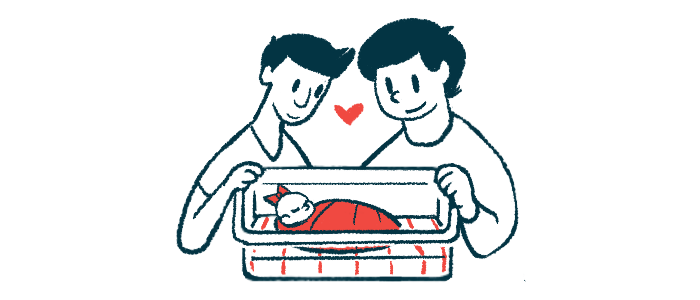SMA newborn screening seen as cost effective in real-world terms

The start of a newborn screening (NBS) program for spinal muscular atrophy (SMA), allowing early treatment for infants found to have the disease, added to healthy years of life for patients in Belgium, according to a real-world analysis of its cost-effectiveness.
“Spinal muscular atrophy newborn screening coupled with early treatment is thus cost-effective compared with late treatment following clinical diagnosis,” its scientists wrote.
The study, “Cost-effectiveness of spinal muscular atrophy newborn screening based on real-world data in Belgium,” was published in the journal Neuromuscular Disorders.
SMA newborn screening began in Belgium in March 2018
A rare neuromuscular disease, SMA is caused by inherited defects in the SMN1 gene. Such defects affect the nerves that support muscles, with symptoms that span muscle weakness and wasting to scoliosis, fatigue, and problems with breathing.
Most children with its most common and severe form, called SMA type 1, die before the age of 2 without treatment, while those with SMA type 2 often are able to sit on their own, but cannot stand or walk. People with SMA type 3 and type 4, both milder disease forms with later onset, may lose their ability to walk in adolescence or adulthood.
SMA has a major impact on quality of life for patients and caregivers, and it comes with substantial healthcare costs. A recent review study reported that average U.S. total healthcare costs for people with infantile-onset disease were 54.2 times higher than an age-matched control group. For childhood-onset and later-onset patients, these total costs were 33.7 and 3.1 times higher than for controls, respectively.
With the approval of three disease-modifying treatments for SMA — Evrysdi (risdiplam), Spinraza (nusinersen), and Zolgensma (onasemnogene abeparvovec) — mortality in early-onset SMA has fallen, and patients with all SMA types are reporting gains in their motor abilities.
Because early treatment is associated with better motor improvements, many countries have started newborn screening programs to detect SMN1 mutations as early as possible.
However, implementing an NBS program comes with additional costs on top of those required for treatment.
According to researchers based in Belgium, which launched its screening program in 2018, it is “important to carry out an economic evaluation of real-world data to assess the cost-effectiveness of NBS for SMA when screening is followed by treatment.”
Real-world data on quality of life, costs, and motor development were collected from 12 patients diagnosed with SMA via NBS and 43 others diagnosed after disease symptoms were evident. All began a disease-modifying treatment upon diagnosis. For the NBS group, treatment started before they were 55 days old (under 2 months), while the youngest symptomatic patient was treated at age 2.5 months and the others at later times in life.
“To our knowledge, this study is … the first to include real-world data,” the researchers noted.
An economic model was developed that compared costs and outcomes, as expressed in quality-adjusted life years (QALYs), which measures the impact on life quality and duration over a specific period. One QALY is equal to one year of life in perfect health.
Slightly higher care costs with NBS, but better quality-adjusted life years
The analysis associated newborn screening with slightly higher healthcare costs compared with symptomatic-treated patients — €6,858,061 vs. €6,738,120 (about $7,404,065 vs. $7,274,575).
Still, those identified through NBS and treated early had twice as many QALYs than those diagnosed later (40.95 vs. 20.34). Overall, newborn screening for SMA associated with lower costs per QALY.
“This result is in line with other studies that reported the cost-effectiveness, and even dominance, of NBS SMA compared to no screening,” the researchers wrote.
In all scenarios examined — societal perspective, caregiver burden, and treatments selected by parents — NBS was cost-effective.
Specifically, from a societal perspective, there were €14,457 ($15,608) less in incremental (additional) costs and an incremental QALY gain of 20.61 (additional QALYs over a lifetime).
With caregiver burden, cumulative costs were €74,353 ($80,272) less with a QALY incremental gain of 27.51. Similar findings were observed when treatment was chosen by the parents, with €2,596,748 ($2,803,488) less in incremental costs and a QALY of 20.61.
In all sensitivity analyses, the incremental cost-effectiveness ratio — the difference in costs divided by the difference in outcomes — was below €60,000 ($64,777) per QALY gained. Thus, “NBS could be considered as cost-effective,” the researchers wrote. The cost-effectiveness of NBS was particularly sensitive to the choice of treatment and the societal perspective.
Finally, a statistical analysis suggested that NBS had a 100% probability of being cost-effective from a threshold of €20,000 ($21,592) per QALY gained.
“SMA NBS coupled with one of the three available treatments leads to substantial better health outcomes than treatment initiated following clinical diagnosis, demonstrating the cost effectiveness of NBS in real-world settings,” the team concluded.
The post SMA newborn screening seen as cost effective in real-world terms appeared first on SMA News Today.




